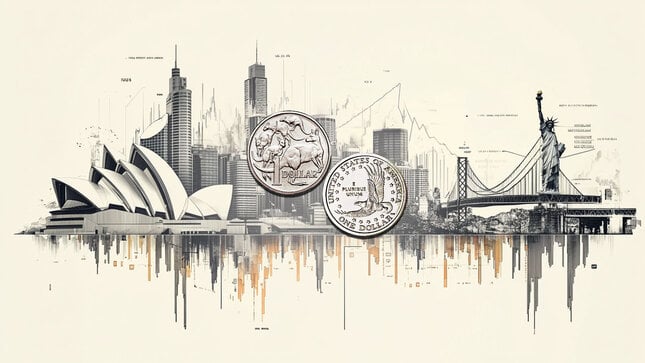- The US Dollar clings to its latest gains with the DXY above 106.00.
- Expectations for additional interest rate cuts by the Federal Reserve have waned.
- Important US data releases this week will shape the outlook for monetary policy and forex.
The US Dollar Index (DXY), which measures the value of the USD against a basket of six currencies, is clinging to its latest gains in the US session on Tuesday. Expectations for additional interest rate cuts by the Federal Reserve (Fed) have waned, and important US data releases in the coming weeks will shape the outlook for monetary policy. These include Consumer Price Index (CPI) and Retail Sales data later this week.
The DXY is anticipated to continue its uptrend, supported by strong US economic fundamentals. The upcoming release of inflation data and Retail Sales figures is expected to bolster the US Dollar. Despite profit-taking and easing labor conditions, the Fed remains optimistic about the economy, and the Greenback's overall trend remains positive.
Daily digest market movers: US Dollar rally continues, Fed easing expectations shift
- Fed easing expectations shift with the market pricing in only 70% odds of a follow-up cut in December.
- The swaps market is pricing in around 50% odds of a December cut, showing a significant shift from September's pricing.
- The market is now pricing in 75 to100 bps of total easing over the next 12 months.
- In addition, investors are pricing in a terminal rate near 3.5% compared to 2.5% in September.
- Fed officials are likely to reinforce the cautious tone this week.
DXY technical outlook: Greenback approaches overbought levels
The DXY index indicators lie deep in positive terrain, but the Relative Strength Index (RSI) lies near 70. Its proximity to overbought levels suggests a potential for a pullback or consolidation in the near term. However, the overall technical outlook remains bullish, with indicators pointing to further upside potential.
In case of a correction, the 105.00-105.50 level might be used as a support to consolidate gains.
Central banks FAQs
Central Banks have a key mandate which is making sure that there is price stability in a country or region. Economies are constantly facing inflation or deflation when prices for certain goods and services are fluctuating. Constant rising prices for the same goods means inflation, constant lowered prices for the same goods means deflation. It is the task of the central bank to keep the demand in line by tweaking its policy rate. For the biggest central banks like the US Federal Reserve (Fed), the European Central Bank (ECB) or the Bank of England (BoE), the mandate is to keep inflation close to 2%.
A central bank has one important tool at its disposal to get inflation higher or lower, and that is by tweaking its benchmark policy rate, commonly known as interest rate. On pre-communicated moments, the central bank will issue a statement with its policy rate and provide additional reasoning on why it is either remaining or changing (cutting or hiking) it. Local banks will adjust their savings and lending rates accordingly, which in turn will make it either harder or easier for people to earn on their savings or for companies to take out loans and make investments in their businesses. When the central bank hikes interest rates substantially, this is called monetary tightening. When it is cutting its benchmark rate, it is called monetary easing.
A central bank is often politically independent. Members of the central bank policy board are passing through a series of panels and hearings before being appointed to a policy board seat. Each member in that board often has a certain conviction on how the central bank should control inflation and the subsequent monetary policy. Members that want a very loose monetary policy, with low rates and cheap lending, to boost the economy substantially while being content to see inflation slightly above 2%, are called ‘doves’. Members that rather want to see higher rates to reward savings and want to keep a lit on inflation at all time are called ‘hawks’ and will not rest until inflation is at or just below 2%.
Normally, there is a chairman or president who leads each meeting, needs to create a consensus between the hawks or doves and has his or her final say when it would come down to a vote split to avoid a 50-50 tie on whether the current policy should be adjusted. The chairman will deliver speeches which often can be followed live, where the current monetary stance and outlook is being communicated. A central bank will try to push forward its monetary policy without triggering violent swings in rates, equities, or its currency. All members of the central bank will channel their stance toward the markets in advance of a policy meeting event. A few days before a policy meeting takes place until the new policy has been communicated, members are forbidden to talk publicly. This is called the blackout period.
Information on these pages contains forward-looking statements that involve risks and uncertainties. Markets and instruments profiled on this page are for informational purposes only and should not in any way come across as a recommendation to buy or sell in these assets. You should do your own thorough research before making any investment decisions. FXStreet does not in any way guarantee that this information is free from mistakes, errors, or material misstatements. It also does not guarantee that this information is of a timely nature. Investing in Open Markets involves a great deal of risk, including the loss of all or a portion of your investment, as well as emotional distress. All risks, losses and costs associated with investing, including total loss of principal, are your responsibility. The views and opinions expressed in this article are those of the authors and do not necessarily reflect the official policy or position of FXStreet nor its advertisers. The author will not be held responsible for information that is found at the end of links posted on this page.
If not otherwise explicitly mentioned in the body of the article, at the time of writing, the author has no position in any stock mentioned in this article and no business relationship with any company mentioned. The author has not received compensation for writing this article, other than from FXStreet.
FXStreet and the author do not provide personalized recommendations. The author makes no representations as to the accuracy, completeness, or suitability of this information. FXStreet and the author will not be liable for any errors, omissions or any losses, injuries or damages arising from this information and its display or use. Errors and omissions excepted.
The author and FXStreet are not registered investment advisors and nothing in this article is intended to be investment advice.
Recommended content
Editors’ Picks

Gold price jumps to refresh record high above $3,070 amid Trump's tariff plans
Gold price hits a fresh all-time peak above $3,070 in the Asian session on Friday as escalating global trade tensions, the uncertainty over Trump's reciprocal tariffs, and the risk-off mood continue to drive safe-haven flows. Bets that the Fed will resume its rate-cutting cycle soon lend additional support to the bullion.

USD/JPY falls toward 150.50 after hot Tokyo CPI; US PCE awaited
USD/JPY has come under moderate selling pressure and heads toward 150.50 early Friday. Hot Tokyo CPI figures and BoJ's March Summary of Opinions ramp up BoJ rate hike bets, supporting the Japanese Yen. Meanwhile, tariff jitters undermine the US Dollat, bolstering the haven demand for the Yen.

AUD/USD drops below 0.6300 amid trade war fears
AUD/USD drops back below 0.6300 in Friday's Asian trading, undermined by broad risk-aversion due to US President Trump's latest auto tariffs announcements. Traders now look to the US PCE Price Index for some meaningful impetus. Hopes for more stimulus from China could cap the Aussie's decline.

Top 3 crypto gainers today: SUI,TONCOIN, Pi Network price predictions
SUI, Toncoin, and Pi Network have emerged as the top-performing assets among the top 20 ranked cryptocurrencies on Thursday. These altcoins saw impressive gains driven by fundamental developments, institutional interest, and growing community activity.

US: Trump's 'Liberation day' – What to expect?
Trump has so far enacted tariff changes that have lifted the trade-weighted average tariff rate on all US imports by around 5.5-6.0%-points. While re-rerouting of trade will decrease the effectiveness of tariffs over time, the current level is already close to the highest since the second world war.

The Best brokers to trade EUR/USD
SPONSORED Discover the top brokers for trading EUR/USD in 2025. Our list features brokers with competitive spreads, fast execution, and powerful platforms. Whether you're a beginner or an expert, find the right partner to navigate the dynamic Forex market.